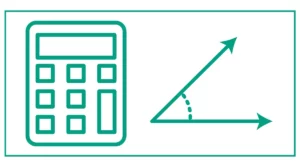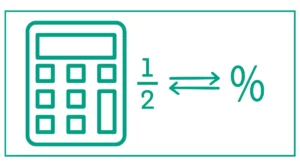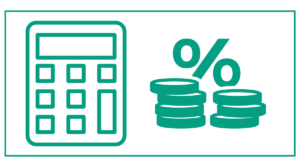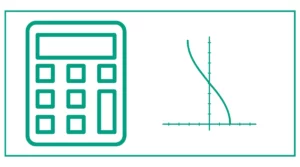Octagon Calculator
The Octagon calculator helps you calculate all eight vertices of the octagon from side length or perimeter.
Simply enter the side length (a) or perimeter to calculate the remaining values like area, longest diagonal, medium diagonal, shortest diagonal, circumcircle radius, and incircle radius.
The calculator uses the following formulae for octagon calculations:
- area of regular polygon = perimeter x apothem / 2
- area of triangle = base x height / 2
- area of octagon = 8 x base x height / 2 = perimeter x apothem / 2
- short diagonal = a x √(2 + √2)
- Medium diagonal = a x (1 + √2)
- Long diagonal l = a x √(4 + 2√2)
- Circumcircle radius= l/2 = a / 2 x √(4 + 2√2)
- Incircle radius (apothem)= m/2 = a/2 x (1 + √2)
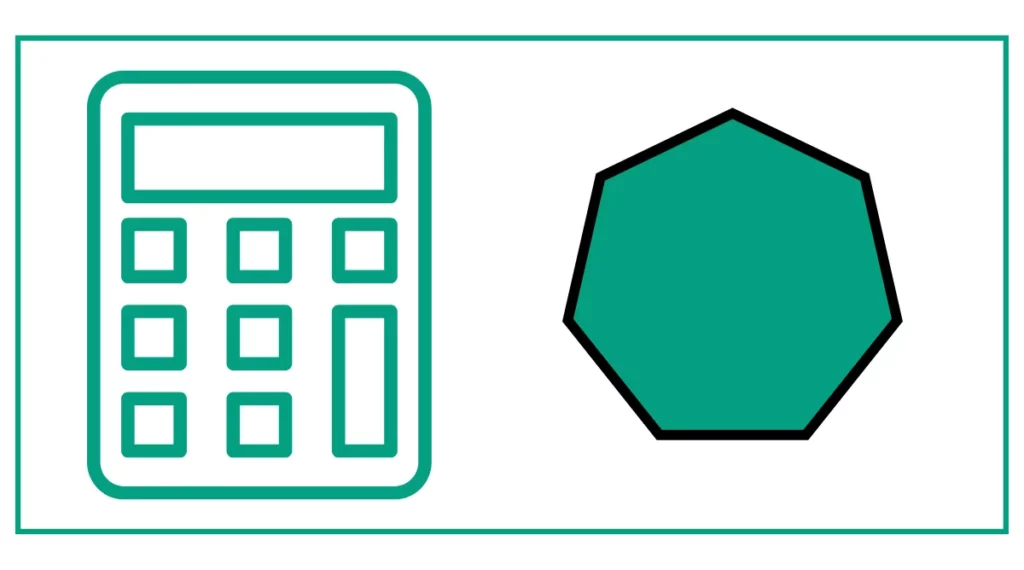
You might be interested in finding the polar coordinates or polar conversions.
What is an Octagon?
An octagon is a polygon with eight sides and eight vertices. It’s a two-dimensional shape that can be regular or irregular. A regular octagon has all sides of equal length and all interior angles equal to 135 degrees. The sum of the interior angles of any octagon is 1080°.
Properties of an Octagon
- Eight sides
- Eight vertices
- Eight interior angles
- Sum of interior angles: 1080°
- Each interior angle in a regular octagon: 135°
- Diagonals: 20
Regular Octagons vs. Irregular Octagons
A regular octagon has all sides of equal length and all angles equal. It’s perfectly symmetrical and can be inscribed in a circle. An irregular octagon, on the other hand, may have sides of different lengths and angles of different measures.
Area of an Octagon Calculator
Calculating the area of an octagon can be complex, especially for irregular octagons. That’s where an octagon calculator comes in handy. These tools can quickly compute the area, perimeter, and other properties of an octagon based on given inputs.
How to Use an Octagon Calculator
- Input the known values (e.g., side length, apothem, or perimeter)
- Select the calculation you want to perform
- Click “Calculate” to get the results
Calculating the Area of a Regular Octagon
For a regular octagon, there are several formulas we can use to calculate its area. Let’s explore these methods:
Method 1: Using Side Length
The area of a regular octagon with side length ‘a’ is given by:
Area = 2a² * (1 + √2)
For example, if the side length is 5 cm:
Area = 2 * 5² * (1 + √2) ≈ 120.71 cm²
Method 2: Using the Apothem
The apothem is the distance from the center of the octagon to the midpoint of any side. If we know the apothem ‘r’ and the side length ‘a’, we can use:
Area = 4ar
For instance, if the side length is 5 cm and the apothem is 6.04 cm:
Area = 4 * 5 * 6.04 = 120.8 cm²
Method 3: Using the Circumradius
The circumradius ‘R’ is the radius of the circle that circumscribes the octagon. The formula using the circumradius is:
Area = 8R² * tan(22.5°)
If the circumradius is 6.53 cm:
Area = 8 * 6.53² * tan(22.5°) ≈ 120.71 cm²
Calculating the Perimeter of an Octagon
The perimeter of an octagon is simply the sum of all its sides. For a regular octagon with side length ‘a’:
Perimeter = 8a
For example, if each side is 5 cm long:
Perimeter = 8 * 5 = 40 cm
Diagonals of a Regular Octagon
A regular octagon has three types of diagonals:
- Longest diagonal (l): connects opposite vertices
l = a * √(4 + 2√2) - Medium diagonal (m): connects every other vertex
m = a * (1 + √2) - Shortest diagonal (s): connects vertices with one vertex between them
s = a * √(2 + √2)
Where ‘a’ is the side length of the octagon.
Circumradius and Inradius of a Regular Octagon
The circumradius (R) and inradius (r) are important measurements in a regular octagon:
- Circumradius: R = a * √(2 + √2) / 2
- Inradius (apothem): r = a * (1 + √2) / 2
Where ‘a’ is the side length of the octagon.
Real-World Applications of Octagons
Octagons are found in various real-world applications:
- Traffic signs: Stop signs are typically octagonal
- Architecture: Octagonal towers and buildings
- Tiling and flooring patterns
- Nuts and bolts: Some bolt heads are octagonal
- Coins: Some currencies use octagonal coins
Example Calculations Using an Octagon Calculator
Let’s work through two examples using our octagon calculator to demonstrate its functionality and usefulness.
Example 1: Calculating Area from Side Length
Suppose we have a regular octagon with a side length of 10 cm. Let’s use the calculator to find its area and other properties:
- Input: Side Length (a) = 10 cm
- Click “Calculate”
Results:
- Perimeter: 80 cm
- Area: 482.84 cm²
- Longest Diagonal: 24.14 cm
- Medium Diagonal: 24.14 cm
- Shortest Diagonal: 17.07 cm
- Circumcircle radius: 12.07 cm
- Incircle radius (apothem): 12.07 cm
Example 2: Calculating Side Length from Perimeter
Now, let’s say we know the perimeter of a regular octagon is 64 cm, and we want to find its side length and area:
- Input: Perimeter = 64 cm
- Click “Calculate”
Results:
- Side Length: 8 cm
- Area: 309.02 cm²
- Longest Diagonal: 19.31 cm
- Medium Diagonal: 19.31 cm
- Shortest Diagonal: 13.66 cm
- Circumcircle radius: 9.66 cm
- Incircle radius (apothem): 9.66 cm
Benefits of Using an Octagon Calculator
- Time-saving: Quickly perform complex calculations
- Accuracy: Reduce the risk of manual calculation errors
- Versatility: Calculate various properties from different inputs
- Educational: Helps understand relationships between octagon measurements

References
- Octagon – an overview | ScienceDirect Topics. (n.d.). Octagon – an Overview | ScienceDirect Topics. doi.org/10.1016/B978-012619455-5.50002-4
